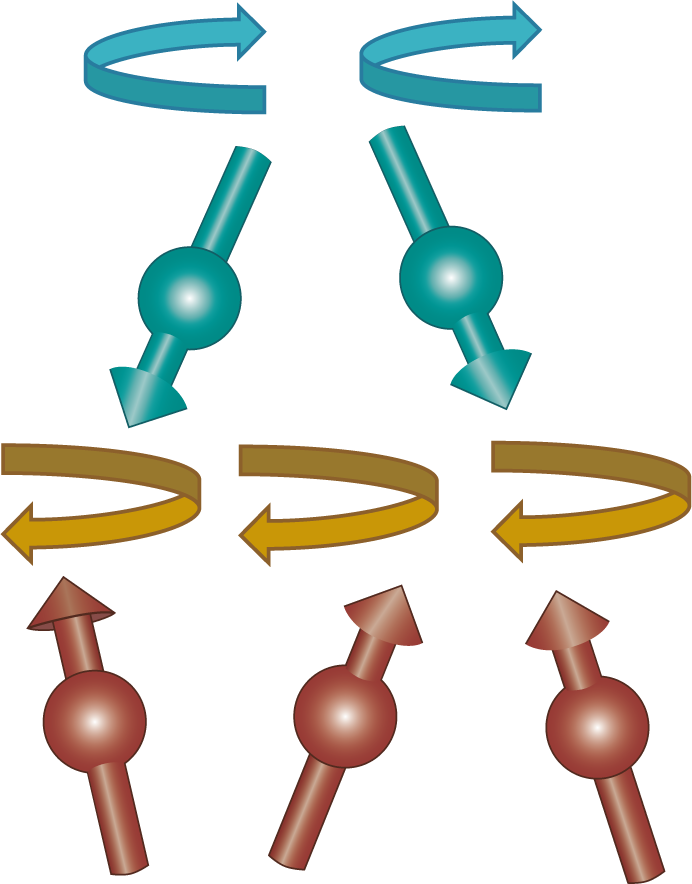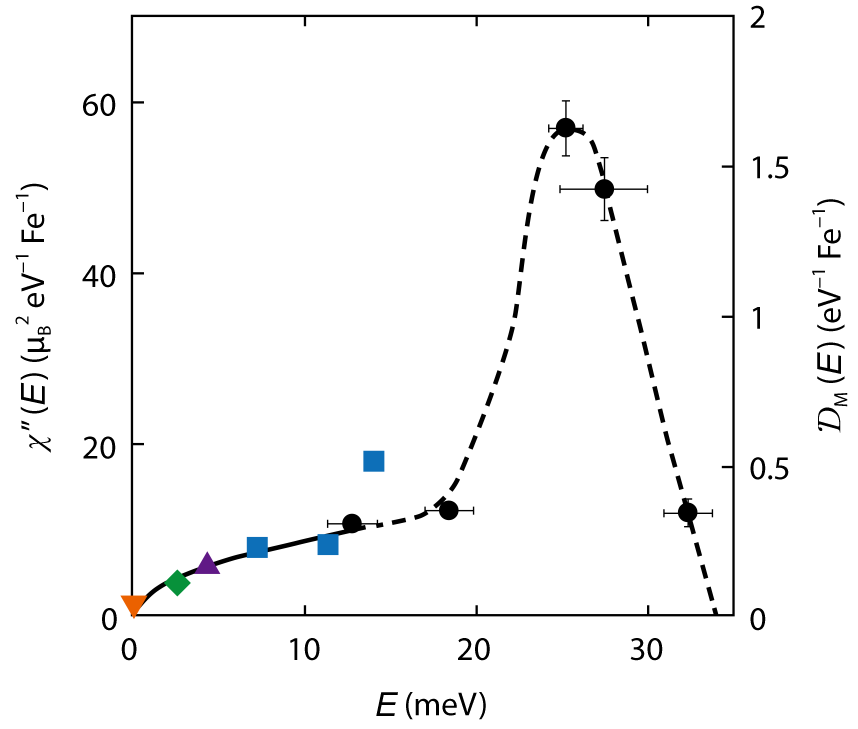
Fig.3-13 Low energy mode of spin waves in Y3Fe5O12

Fig.3-14 Magnon density of states in Y3Fe5O12
Spin current defines the flow of spin-angular momentum. Spin current power is generated using a revolutionary method that produces electricity in an insulator. The spin current flows in the presence of a temperature gradient; i.e., it is a magnon flow. The flow establishes a voltage on the platinum electrodes via the inverse spin Hall effect. Spin power generation has been investigated in ferromagnetic materials such as yttrium iron garnet (YIG; composition Y3Fe5O12). YIG exhibits up and down Fe3+ spins in a ratio of 3:2 (Fig.3-13), leading to a ferrimagnetic state. At low energies, both spins are limited to anticlockwise rotation and cannot freely rotate in three dimensions (Fig.3-13). Such restrictions are imposed by the crystallographic symmetry of the spins. Theoretical study confirmed that this rotation is closely related to the spin current in YIG and that mixing the clockwise and anticlockwise rotations decreases the efficiency. In YIG, both types of rotational energies are split by ~30 meV, implying that only the anticlockwise rotation in Fig.3-13 occurs at low temperatures. Furthermore, the magnitude of the spin current depends on the state number of the spin rotations (magnons), which determines the generation efficiency of the spin current power. The state number of the magnons can be measured as the magnon density of states (MDOS) via inelastic neutron scattering (INS). However, this measurement is difficult because the scattering intensity must be measured on an absolute scale. For this reason, the MDOS has never been directly determined, not even in the popular magnetic material YIG.
As shown in Fig.3-14, the MDOS in YIG has been newly detected over a wide energy range (three orders of magnitude) using three INS spectrometers (4SEASONS, AMATERAS, and DNA) in the Material and Life Science Experimental Facility of J-PARC Center.
Recently, highly efficient generation materials of spin current power have been extensively studied. A candidate ferrimagnetic material must meet the following conditions: “The clockwise and anticlockwise rotational modes do not overlap”, and “The MDOS in Fig.3-14 is high within the working temperature range (i.e., the low energy regime)”.
Whether a material satisfies these conditions can be studied via INS experiments. We suspect that magnon effects strongly interact with phonon effects. Therefore, our future study will investigate the effects of both magnons and phonons on the spin current by neutron scattering.
This work was supported by the Japan Society for the Promotion of Science (JSPS) KAKENHI Grant-in-Aid for Scientific Research (B) (No.25287094).
<Previous: 3-5 | Next: 4 Nuclear Science and Engineering Research>